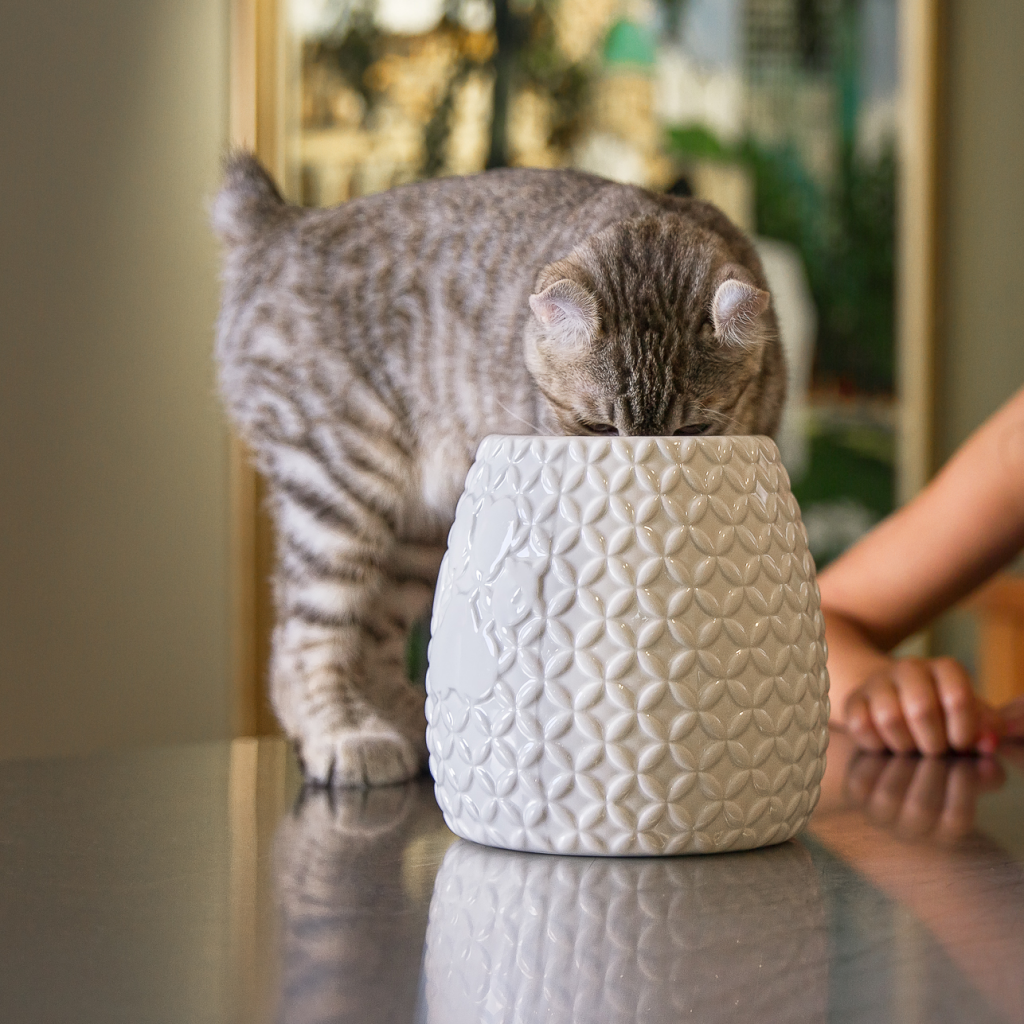You think punishing your cat works? When you take out your water spray and your cat comes down very quickly, is that a proof that punishment works? But if he returns, isn’t that proof that the cat has understood nothing?
When I talk about punishment, I am not just talking about physical punishment but also verbal punishment. The simple “no” is a punishment and here are the reasons why it’s totally ineffective with the cat.
Motivation
When a cat adopts a good or bad behavior it is necessarily because it gives something back to him. He expresses a need. The table is often placed in a central location where the cat has a perfect view of the kitchen, vestibule, living room, corridor, etc. The table becomes a cat tree and an extraordinary watchtower. It is also possible that there is food left over, making it even more interesting.
The easiest way to change a behavior is simply to understand what motivates the cat to adopt it and simply give him an alternative. Instead of punishing your cat because he comes up on the table, wouldn’t it be more simple to put a cat tree close, a little higher than the table, giving him a better watchtower to monitor his territory.
Inconsistency
Sometimes the cat gets punished because he climbs on the table when his owner sees him do it. But when he is not there or even when he is present, but does not see his cat go there in secret, there is no consequence. How could he understand that the table is forbidden to him? For him the only constant between each punishment is your arrival. You are therefore the reason why he is punished and not because he is on the table.
The “timing”
The cat lives in the moment. So if you punish him, only a second after a bad behavior and he starts washing himself, your cat will understand that you punish him because he is washing himself.
It is infrequent to punish our cats at the right time. The result is that each time he perceives that he is being punished for something different and it becomes impossible for him to understand why he is being the punished. Moreover, the only thing in common between all these punishments is your presence! Your cat can quickly become anxious to see you approach, not knowing whether he will be flattered or punished. It degrades your relationship with your cat who might try to avoid you, but it can also create a significant stress that will cause even more behavioral problems.
The intensity
Finally, intensity is important. Punish too weakly and the cat will not desensitize this punishment and you will have to increase its strength gradually until it is no longer effective or it becomes really harmful. Punish too strongly and this will create significant stress or even trauma and you will be associated with something very negative.
Here are some simple tips that could change your cat’s life and yours:
– Ignore bad behaviors and reward good ones;
– Show your cat what behaviors you want him to adopt rather than punish bad behaviors. Use a reward to do it;
– Change the environment according to the cat’s needs. Do not forget that the cat is a territorial animal and that it is defined by his environment. A simple change in his environment can modify everything in his behavior;
– Consult a feline behaviorist to learn about your cat’s needs.
By rewarding your cat, he will be more inclined to adopt a new behavior (or transform it) but, as a bonus, he will be happy to do so, which will reduce his level of anxiety. Teach him not to go on the table when you eating by using treats or games. He will learn that he has more to win by staying on the floor than sitting on the table. Also, give him access to the table when not in use! After all it’s a cat tree you’ve never paid for.
Anyway, you know your cat is going on the table when you’re not home, right?

